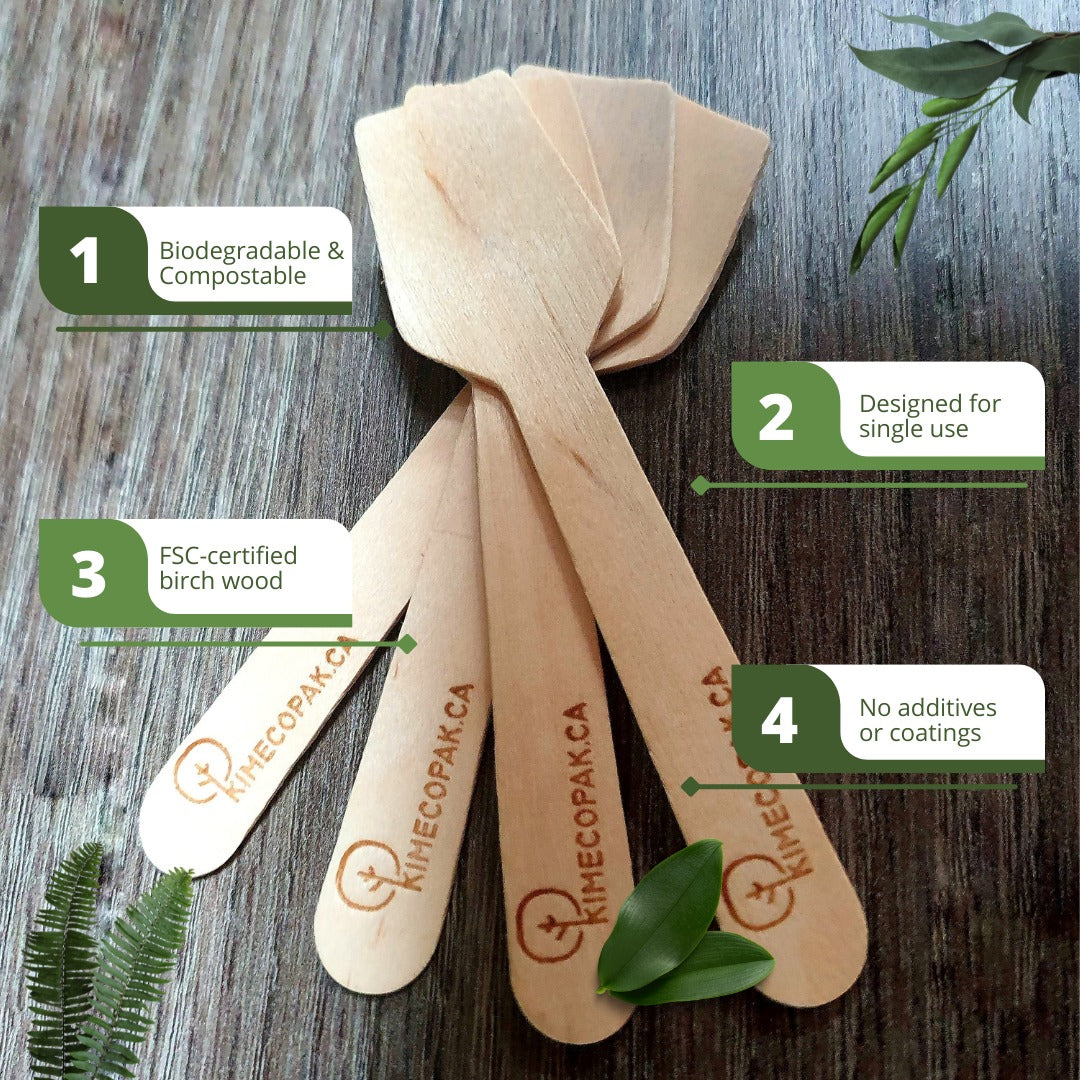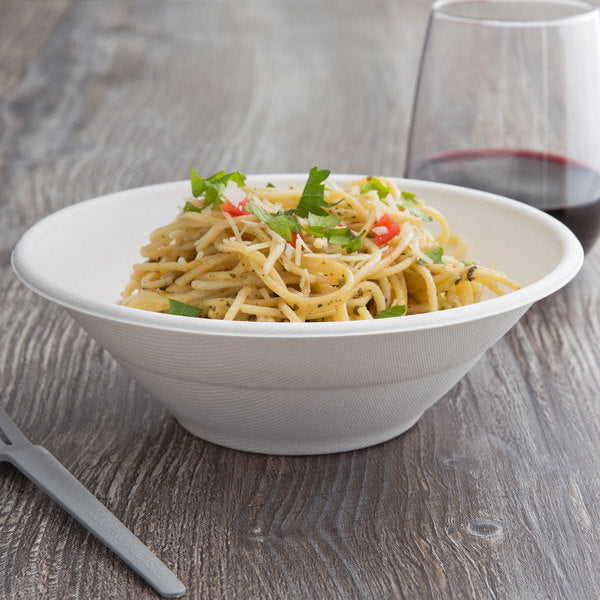Semolina Flour is a type of flour derived from hard wheat, often known as durum wheat. Semolina flour's bright yellow tint distinguishes it from other varieties of flour. With its high protein and gluten content, semolina flour makes an excellent choice for producing pasta and bread, particularly those that require dough elasticity and hardness. Furthermore, semolina is high in fiber and vitamin B, which aid in digestion and cardiovascular health, allowing the body to remain healthy and prevent heart disease.
- Understanding 5 Mother Sauces for Chefs
- Pasta Sauces: From Classic Italian Varieties to Regional Specialties
- Understanding Differences Between Pizza Sauce vs Pasta Sauce
Types of Semolina Flour

Semolina flour is available in a variety of fineness levels, including coarse, medium, and fine. Every variety of flour has a unique set of applications and is appropriate for a variety of recipe types.
While compared to other flours such as ordinary or whole wheat flour, semolina has a larger grain structure and better elasticity, which aids in the elasticity of dough while preparing noodles and cakes.
What Is Wheat Semolina?
Wheat semolina is a coarse flour derived from grinding durum wheat, which is a hard variety of wheat. Known for its distinctive yellow color and gritty texture, wheat semolina possesses a high gluten content, making it particularly valuable in various culinary applications. This unique composition allows semolina to hold its shape and resist breaking, particularly in high-temperature cooking processes.
Semolina is primarily used to create pasta, couscous, and bread crusts. Additionally, it appears in certain desserts like semolina pudding, where its gritty texture contributes a pleasant mouthfeel. Understanding the origins and characteristics of wheat semolina can expand your culinary repertoire, enabling you to incorporate this versatile ingredient into both everyday meals and special recipes.

Common Uses of Semolina Flour
Many noodle recipes call for semolina flour, particularly in traditional Italian dishes like spaghetti and ravioli. Semolina is also used to make bread and pizza crusts, which contribute to a crispy and delectable texture.
Semolina flour is not only used in European dishes; it is also a key ingredient in many classic Middle Eastern and African dishes, including couscous. Specifically, semolina flour lends a sweet, delectable flavor to delicacies like halva and basbousa.
Durum vs Semolina – What's the Difference?

Durum Wheat Explained
Durum wheat is a robust, hard variety of spring wheat recognized for its impressive protein content and gluten strength—qualities that set it apart from other wheat types. Typically cultivated in regions with hot, dry climates, such as parts of North America and Europe, durum wheat is specifically suited for pasta production because of its high gluten strength.
Milling durum wheat yields semolina flour, making it critical in creating pasta that can withstand boiling while maintaining its texture. It’s fascinating to note that durum wheat is the only type of wheat used for high-quality pasta, a testament to its importance in food manufacturing.
Semolina Flour Explained
Semolina flour is the coarse product obtained via the milling of durum wheat. While semolina is one form of flour derived from durum, there is also durum flour, which is a finer, more powdery version that can be used for bread or pizza dough.
The grainy texture of semolina makes it particularly suited for creating heartier dishes like gnocchi or traditional pasta, where the form and texture are essential. In contrast, durum flour's fine milling allows for a softer crumb in baked goods and is often favored for pizzas due to its ability to create a crisp crust.
Key Differences Table
|
Feature |
Durum Flour |
Semolina Flour |
|
Texture |
Fine |
Coarse/grainy |
|
Color |
Pale yellow |
Golden yellow |
|
Best Use |
Breads, pizza dough |
Pasta, porridge, crust |
|
Gluten Strength |
High |
Very high |
Semolina Flour Recipes

How to Make Pasta with Semolina Flour?
To make pasta with semolina flour, begin with easy recipes such as spaghetti or ravioli. Semolina flour, water, and eggs are combined in a basic recipe, which is then worked into the desired shape by kneading. The pasta has excellent elasticity and chewiness thanks to the semolina, making for a delicious meal.
Here is the detailed instruction:
Ingredients:
- 2 cups semolina flour
- 1 large egg
- 1/4 cup warm water
- 1 teaspoon salt
Instructions:
- Combine dry ingredients: In a large bowl, whisk together the semolina flour and salt.
- Add wet ingredients: Make a well in the center of the flour mixture and add the egg and warm water.
- Knead: Gradually incorporate the flour into the wet ingredients, kneading until a smooth, elastic dough forms. This may take 5-7 minutes.
- Rest: Cover the dough with a damp cloth and let it rest for 30 minutes.
- Shape and cook: Divide the dough into desired shapes (e.g., spaghetti, ravioli) and cook in boiling salted water until al dente.
Pasta Sauces: From Classic Italian Varieties to Regional Specialties
How to Make Semolina Bread?

Semolina bread is known for its delicious flavor and characteristic crispy crust. To make this bread, you need to mix semolina flour with yeast, water, and a little salt. After kneading and letting the dough rest, you bake the bread at a high temperature to create a crispy crust on the outside.
Here are is detailed instruction:
Ingredients:
- 2 cups semolina flour
- 1 teaspoon active dry yeast
- 1 cup warm water
- 1 teaspoon salt
- 2 tablespoons olive oil
Instructions:
- Combine dry ingredients: In a large bowl, whisk together the semolina flour, yeast, and salt.
- Add wet ingredients: Add the warm water and olive oil to the dry ingredients.
- Knead: Knead the dough until smooth and elastic, about 5-7 minutes.
- Rise: Place the dough in a greased bowl, cover, and let it rise in a warm place until doubled in size.
- Shape: Punch down the dough and shape it into a loaf.
- Bake: Place the loaf in a greased loaf pan and bake in a preheated oven at 400°F (200°C) for 30-35 minutes, or until golden brown and sounds hollow when tapped.
Basbousa (Middle Eastern sweet semolina bread)
A common Middle Eastern dessert made with sugar syrup and semolina flour is called basbousa. The straightforward recipe highlights the semolina flour's sweet flavor and combines it with the syrup's wetness to create a visually appealing dessert.
Here is the detailed instruction:
Ingredients:
- 1 cup semolina flour
- 1/2 cup granulated sugar
- 1/4 cup melted butter
- 1 teaspoon baking powder
- 1/4 teaspoon cardamom
- 1/2 cup milk
- 1 teaspoon vanilla extract
- Simple syrup (equal parts sugar and water)
Instructions:
- Combine dry ingredients: In a bowl, whisk together the semolina flour, sugar, baking powder, and cardamom.
- Add wet ingredients: Stir in the melted butter, milk, and vanilla extract.
- Pour: Pour the batter into a greased baking dish.
- Bake: Bake in a preheated oven at 350°F (175°C) for 30-35 minutes, or until golden brown.
- Serve: Drizzle the baked basbousa with simple syrup and serve warm.
Health Benefits of Semolina Flour

Semolina flour is not only tasty but also incredibly nutritious. It has high levels of fiber, protein, and several vital vitamins and minerals, including magnesium and iron. Semolina's fiber promotes healthy digestion, regulates blood sugar, and may aid in successful weight loss.
Is Semolina Suitable for a Diet?
Semolina is gluten-free, so it is not good for persons who have celiac disease or gluten sensitivities. For these individuals, semolina must be swapped out for other gluten-free flour in their diet.
Best Alternative Semolina Flours
Why Substitute Semolina?
Semolina flour is cherished for its unique texture and high protein content, making it a staple in various recipes, especially pasta. However, there may be moments when a substitute is necessary.
- Allergies or Gluten Intolerance: Individuals with celiac disease or gluten sensitivity cannot use semolina, and they need alternatives that are gluten-free.
- Dietary Preferences (Low-Carb, Grain-Free): For those following low-carb or grain-free diets, such as ketogenic diets, substitutes offer flexibility without sacrificing dietary goals.
- Unavailability of Semolina at Stores: Depending on your location, semolina flour might not always be readily available, necessitating a search for alternatives.
Common Alternatives to Semolina Flour
|
Alternative |
Texture/Use Match |
Gluten-Free? |
Best Use |
|
Durum flour |
Yes (fine version) |
No |
Pasta, pizza dough |
|
All-purpose flour |
Medium match |
No |
Baking, thickeners |
|
Bread flour |
High protein |
No |
Yeast breads, pizza crust |
|
Whole wheat flour |
Heavier texture |
No |
Rustic baking |
|
Spelt flour |
Earthy taste |
Low gluten |
Muffins, pancakes |
|
Rice flour |
Light & GF |
Yes |
Gluten-free baking |
|
Cornmeal (fine) |
Crunchy finish |
Yes |
Coating, crust, cornbread |
|
Almond flour |
Nutty & grainy |
Yes |
Keto, low-carb baking |

How to Choose the Right Alternative to Semolina

Match Based on Use Case
Choosing the right flour substitute requires an understanding of your recipe's needs:
- Pasta Dough: For authentic pasta, durum flour or high-protein wheat flours work best, retaining the desired texture and strength.
- Gluten-Free Baking: If you require a gluten-free option, almond flour or rice flour provides a suitable base while allowing you to maintain flavor and structure in your baked goods.
- Crusty Bread or Pizza: Here, bread flour or fine cornmeal can add the necessary chewiness and depth of flavor, creating that perfect crust.
- Desserts: When seeking a semolina-like texture for desserts, consider using almond flour, coconut flour, or fine cornmeal. They can mimic the texture while providing a unique flavor profile.
Conclusion
Semolina flour is a versatile ingredient that can enhance various dishes. From pasta to bread and desserts, its unique texture and flavor profile offer a delightful culinary experience. Whether you're a seasoned cook or just starting out, experimenting with semolina flour is a rewarding journey.







